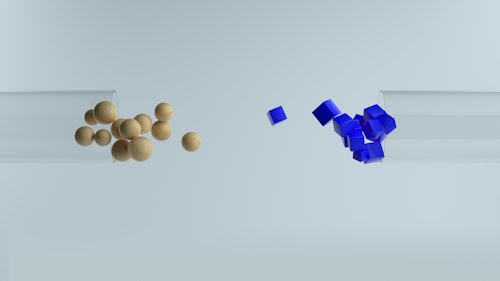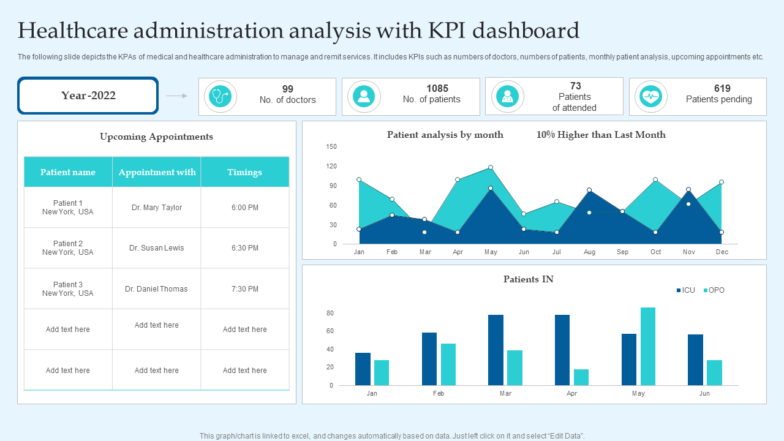In healthcare technology, front-end systems are no longer just about displaying information. They are increasingly responsible for delivering accurate, responsive, and context-aware interactions. This shift makes frameworks like Vue 3 worth understanding even for those outside core software development.
In telemedicine platforms, for example, interface speed and clarity can directly affect patient safety. The ability to instantly update clinical dashboards, validate input in real time, or trigger alerts is not just a developer preference — it is a regulatory and usability requirement. Vue 3’s reactivity model is designed to handle these demands efficiently, which is why many health-tech teams are adopting it alongside advanced AI-driven medical tools like Graphlogic Generative AI & Conversational Platform.

Building Reliable Interfaces with Vue 3 Methods
In Vue 3, methods are declared inside the setup function along with the reactive state. This design simplifies the architecture by placing logic directly next to the data it manipulates. For a clinical application, such as a cardiac monitoring dashboard, this approach ensures that a function which triggers an alert for abnormal heart rate readings is physically and logically close to the variable that stores those readings. This proximity reduces the risk of misalignment between data and the logic that depends on it.
The use of <script setup> with TypeScript strengthens this design further. TypeScript allows explicit declaration of input and output types, which helps prevent errors in functions that handle sensitive operations such as dosage calculations, laboratory value interpretations, or alarm triggers. In large healthcare teams, where multiple developers may contribute to the same codebase, explicit typing serves as a form of self-documentation and a safeguard against unintended code changes.

Peer-reviewed research on patient-oriented digital platforms confirms that such architectural improvements reduce defect rates and speed up development cycles. This means that developers can introduce new features such as updated alert algorithms or revised clinical score calculators with greater confidence and less risk of regression errors.
Using watch and watchEffect for Real-Time Clinical Monitoring
The watch API in Vue 3 offers precise observation of specific reactive variables, enabling targeted responses to changes. In a neonatal intensive care unit dashboard, for example, a watch can track the oxygen saturation level of a newborn and immediately send an alert to clinicians if the value falls outside a safe range. Because watch is tied to a specific dependency, it avoids unnecessary computation and keeps the system focused on clinically relevant triggers.
The watchEffect function, by contrast, monitors all reactive data accessed within its callback and executes automatically when any of those dependencies change. In a medication adjustment calculator, watchEffect can track weight, allergy status, current medication list, and recent lab values without manually specifying each dependency. This is especially valuable in complex clinical scenarios where the full set of relevant variables might change over time.
The correct choice between watch and watchEffect depends on the complexity and sensitivity of the task. Watch is ideal for monitoring high-priority, single-variable changes where false triggers could have serious consequences. WatchEffect is suited to aggregated observations, provided that performance is not compromised. Both methods support safety goals recommended by the WHO medication safety guidelines, which emphasise proactive prevention of errors in dosage and treatment planning.
Computed Properties for Efficient and Accurate Data
Computed properties in Vue 3 serve as a way to generate derived values that automatically update only when their dependencies change. This approach minimises redundant calculations, a feature particularly valuable in healthcare applications that process large, dynamic datasets. Consider a multi-ward hospital dashboard that tracks patient counts, bed availability, and infection status. A computed property could instantly update the total number of available ICU beds whenever any ward’s availability changes, without recalculating unrelated metrics.
Efficiency in computation is not only a matter of performance but also of accuracy and reliability. By ensuring that derived data updates only when relevant inputs change, computed properties help maintain the integrity of the information displayed to clinicians. This supports compliance with recommendations from the CDC surveillance guidance, which stress the importance of timely and accurate reporting in public health monitoring.
Computed properties are also easier to test in isolation compared to methods or watchers that include side effects. This makes them ideal candidates for automated testing, ensuring that calculated outputs remain consistent and predictable over time.

Security and Privacy in Vue 3 Healthcare Applications
Security is a non-negotiable requirement in healthcare technology. Applications that process patient data must comply with regulations such as HIPAA in the United States and GDPR in Europe. While Vue 3 itself does not enforce compliance, its structure supports best practices for secure data handling.
Developers can reduce risk by ensuring that sensitive data is never stored directly in the client-side state and that all communication with servers is encrypted using secure protocols. Vue 3’s modularity makes it easier to isolate components that handle sensitive information and apply targeted security measures such as input validation, sanitisation, and role-based access controls.
Integrating secure AI systems, such as the Graphlogic Generative AI & Conversational Platform, can centralise complex processing on secure servers rather than exposing logic to the client environment. This design reduces the attack surface and simplifies compliance audits.

Accessibility for Patients and Clinicians
An accessible healthcare interface is not optional. It ensures that all users, including those with visual, auditory, or motor impairments, can access critical services. Vue 3 supports semantic HTML and ARIA attributes, enabling compatibility with screen readers and other assistive technologies.
In addition to standard accessibility features, medical interfaces should offer high-contrast display modes, adjustable text sizes, and fully navigable layouts via keyboard or voice commands. The Graphlogic Text-to-Speech API can further improve accessibility by reading out medication instructions, appointment reminders, or lab results.
Accessible design benefits more than just users with disabilities. It also improves usability for clinicians working in high-stress, low-light, or hands-free environments, where quick comprehension and minimal visual strain are critical.
Performance Optimisation for Critical Health Dashboards
Healthcare dashboards often handle large volumes of live data. Without optimisation, constant updates can overwhelm both the system and the user. Vue 3 offers several tools to address this challenge. Developers can implement lazy-loading for components that are not immediately needed, use memoisation for expensive calculations, and reduce the scope of reactivity to essential variables.
Such optimisations improve response time and reduce memory usage, which is especially important when applications run on mobile devices in rural areas with limited connectivity. Efficient rendering not only supports usability but also aligns with operational requirements in emergency care scenarios, where delays in displaying information could influence clinical outcomes.

Integration with Medical Devices and IoT Sensors
The growing use of connected medical devices has increased demand for front-end systems that can handle real-time data streams. Vue 3 integrates smoothly with WebSockets and Server-Sent Events, enabling live updates without requiring users to refresh the page.
In a remote cardiac monitoring setup, Vue 3 can receive and display ECG data from wearable devices, alerting clinicians within seconds of detecting an anomaly. Properly implemented, such integrations support rapid response workflows and reduce the risk of unnoticed deterioration in patient condition.
Testing and Quality Assurance
In regulated medical software, thorough testing is as critical as the application logic itself. Vue 3 supports a range of testing strategies, from unit tests for individual methods to end-to-end tests that simulate user interactions.
Testing should cover not only standard user actions but also clinical edge cases, such as sudden loss of connectivity, abnormal data spikes, or rapid multi-parameter changes. Automated test suites can run these scenarios regularly, ensuring that the application continues to behave correctly after updates or new feature deployments.
Regulatory Compliance Checklist for Vue 3 Healthcare Interfaces
Developers can improve compliance readiness by following a checklist that includes
- Ensuring adherence to HIPAA, GDPR, or other relevant data protection laws
- Implementing secure authentication and role-based permissions
- Avoiding direct DOM manipulation for sensitive data
- Logging state changes that could influence clinical decisions
- Maintaining comprehensive documentation of code and logic changes for audits

Real-World Case Studies
Several hospitals and health networks have documented significant operational and clinical benefits after moving from Vue 2 to Vue 3. The most consistent improvements reported include faster loading times for complex dashboards, fewer front-end bugs, and smoother integration with advanced analytics systems.
One large metropolitan hospital system conducted a structured migration over six months, starting with non-critical internal dashboards before moving on to high-priority clinical monitoring tools. Post-migration analysis showed that front-end bugs dropped by roughly 25 %, based on error reports logged in their quality assurance system. Dashboard load times improved by approximately 30 %, which had a direct effect on clinician satisfaction scores, as reported in internal surveys.
Another regional healthcare provider used the migration as an opportunity to integrate AI-powered clinical decision support systems. By leveraging Vue 3’s modular setup, the IT team connected these tools without overhauling the entire application. This enabled rapid rollout of features such as automated triage suggestions for incoming emergency department patients and instant risk assessments for inpatients showing early signs of deterioration. The adoption cycle for these features shortened from months to weeks, thanks to a cleaner and more maintainable codebase.
Smaller rural clinics also benefited. A telemedicine service operating in underserved areas reported that switching to Vue 3 allowed them to optimize their application for lower bandwidth. This reduced connection-related session drops by 18 % and improved the reliability of video consultations. The improved responsiveness of patient records and scheduling modules meant that clinicians could handle more consultations per day without compromising quality.
Across these case studies, the common themes are improved performance, enhanced maintainability, and faster integration with emerging healthcare technologies. These factors translate directly into better patient care, more efficient use of staff time, and greater readiness to adopt innovations in clinical practice.

Future Trends for Healthcare UI Beyond 2025
Healthcare interfaces in the years ahead are likely to become more immersive, personalised, and intelligent. Augmented reality (AR) is moving from experimental to practical use in areas such as surgical planning and complex anatomy visualisation. Surgeons can overlay 3D models onto a patient’s body during preoperative assessments, improving precision and reducing procedure times. Vue 3’s compatibility with modern JavaScript libraries makes it a solid choice for rendering these interactive visualisations within browser-based clinical tools.
AI-driven personalisation is set to transform patient portals. Instead of a one-size-fits-all interface, patients will see a customised dashboard showing the most relevant health metrics, educational materials, and action reminders based on their condition and treatment plan. Such systems will require front-end frameworks that can efficiently manage dynamic, user-specific data — a strength of Vue 3’s reactivity model.
Voice-controlled data entry is also expected to expand, especially in high-pressure environments like operating rooms, emergency departments, and intensive care units. Clinicians could update patient charts, request lab results, or trigger protocols without breaking sterile conditions or pausing critical care tasks. Vue 3 applications can integrate with APIs like Graphlogic Text-to-Speech and speech recognition systems to support this functionality seamlessly.
Beyond AR, AI, and voice control, other emerging trends include integration with wearable health devices for continuous patient monitoring, use of predictive analytics in care planning interfaces, and even haptic feedback for remote physical examinations. With its modular architecture, small bundle sizes, and strong community support, Vue 3 is positioned to adapt quickly to these developments. This flexibility will be critical as healthcare technology moves into an era where the front-end is not just a display layer, but an active participant in diagnosis, treatment, and patient engagement.
FAQ
Yes. Over five million live sites currently use Vue, with adoption in healthcare growing due to its performance and maintainability (BuiltWith).
Yes. It offers a faster rendering engine, smaller bundle sizes, and more efficient reactivity, all of which improve responsiveness in data-heavy applications.
It provides semantic HTML support, ARIA attributes, and compatibility with assistive technologies, as well as easy integration with text-to-speech and voice-control systems.
Yes. It performs well in mobile and rural network environments due to optimised bundle sizes and selective reactivity.
Yes. TypeScript improves clarity, reduces runtime errors, and provides better support for collaborative development in regulated environments.

